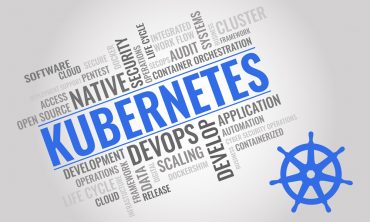
What is the difference between cloud-native, cloud-based, and cloud-enabled. Here are some tips to find out which is best for you.
It’s no secret thatdemand for cloud computing applications for the enterprise is soaring. Despite significant issues stemming from inflation, recession fears, and staffing challenges, the market for cloud-based applications continues its strong growth trajectory and is expected to continue growing for the foreseeable future. In fact, Gartner predicts global spending on public cloud services is forecast to grow 20.7% to a total of $591.8 billion in 2023, up from $490.3 billion in 2022.
There are several factors responsible for driving this growth, with the most compelling being the demand for scale – the need for highly scalable, highly available applications that can span many data centers. Another significant driver is speed – ensuring that application developers have immediate access to hundreds of services without the need to develop or integrate third-party components. Also playing a key role is agility – the ability to use and pay only for what your organization needs rather than investing years of development and many millions of dollars to build an infrastructure around each functional aspect.
There are also other key drivers to cloud adoption. As the digitization of enterprise information only accelerates, the sheer volume of data precipitates the need for scale and the ability to connect different databases, as well as AI and machine learning, to process and access that flow of data. Software built on top of cloud capabilities allows access to the vast amounts of data for analytics and decision-making. Finally, I’d be remiss if I didn’t acknowledge the role of the pandemic and its resulting work-from-anywhere mandate, which has also been a catalyst for cloud adoption.
See also: Report Shows Lack of Cloud Strategy Dampening Success
Cloud-native, -based, or -enabled. Cloud choices abound
That’s the why. The how is a bit more nuanced. As more and more large enterprises embrace all that the cloud has to offer, software providers have options on how to meet that demand, and, as with most options, all come with a range of pros and cons.
- Cloud-native. In the cloud-native approach, applications are developed to leverage the advanced features of the cloud and operate only in the cloud, with no portion of the system running on-premises. Cloud-native applications are typically best suited for a service-based architecture that makes the best use of cloud features such as security and scale. Some examples include load balancers, auto-scaling, container management, content delivery networks, etc.
- Cloud-enabled. Think of cloud-enabled app development as a ‘lift and shift’ approach in which an application that runs on a traditional (on-premises) enterprise system is reconfigured to run in a cloud-based environment. This is a step toward cloud adoption and generally doesn’t require an enormous effort. However, this approach doesn’t take advantage of advanced cloud features and typically doesn’t scale as well as cloud-native applications.
- Cloud-based. Cloud-based applications typically refer to any type of application that is hosted in the cloud. Think of this as a hybrid of cloud-native and cloud-enabled. The best candidates for cloud-based applications are those that need to remain on-premises to meet compliance or security requirements. This is often an enterprise system that will make use of some cloud services but not require a complete redesign of the system.
How do you decide which application development approach is best for your organization? Following are a few key considerations:
Services
Ask yourself which services will be used in your current and future system architecture. Generally, cloud services to be adopted should be prioritized by impact and value. Some are easy to adopt, such as a database service, while others require more significant design/redesign. A cost-benefit analysis will help determine the value and the order in which services can be adopted.
Scalability
There is no question that it is much easier to build a scalable system that takes full advantage of advanced cloud features when a cloud-native approach is adopted from the start. Traditional methods of scaling can work in the cloud, but it’s unlikely that they take advantage of advanced auto-scaling features that span multiple data centers.
Cloud-specific vs. Cloud-agnostic
Many organizations are adopting a cloud-specific approach, touting the benefits of speed and cost. The most significant downside of this approach is becoming ‘locked in’ given what’s involved in moving to another cloud service. Creating a cloud-agnostic application requires a level of abstraction within the application to support different cloud providers. There are technologies out there to help with this, but in order to be sure there is true cloud independence, it would require working with multiple cloud providers. This adds time, work, and ultimately investment.
Despite the pace of development and the number of SaaS offerings currently available, we are still in the early days of enterprise application development for the cloud. After all, on-premises systems that were built to last require a careful migration with many considerations. Yet, many companies are moving in the right direction, and many solutions are now being developed cloud-first. As with all new software evolutions, it requires a strategic approach, incremental advances, and a step out of the comfort zone, but the cloud’s time has come.




























